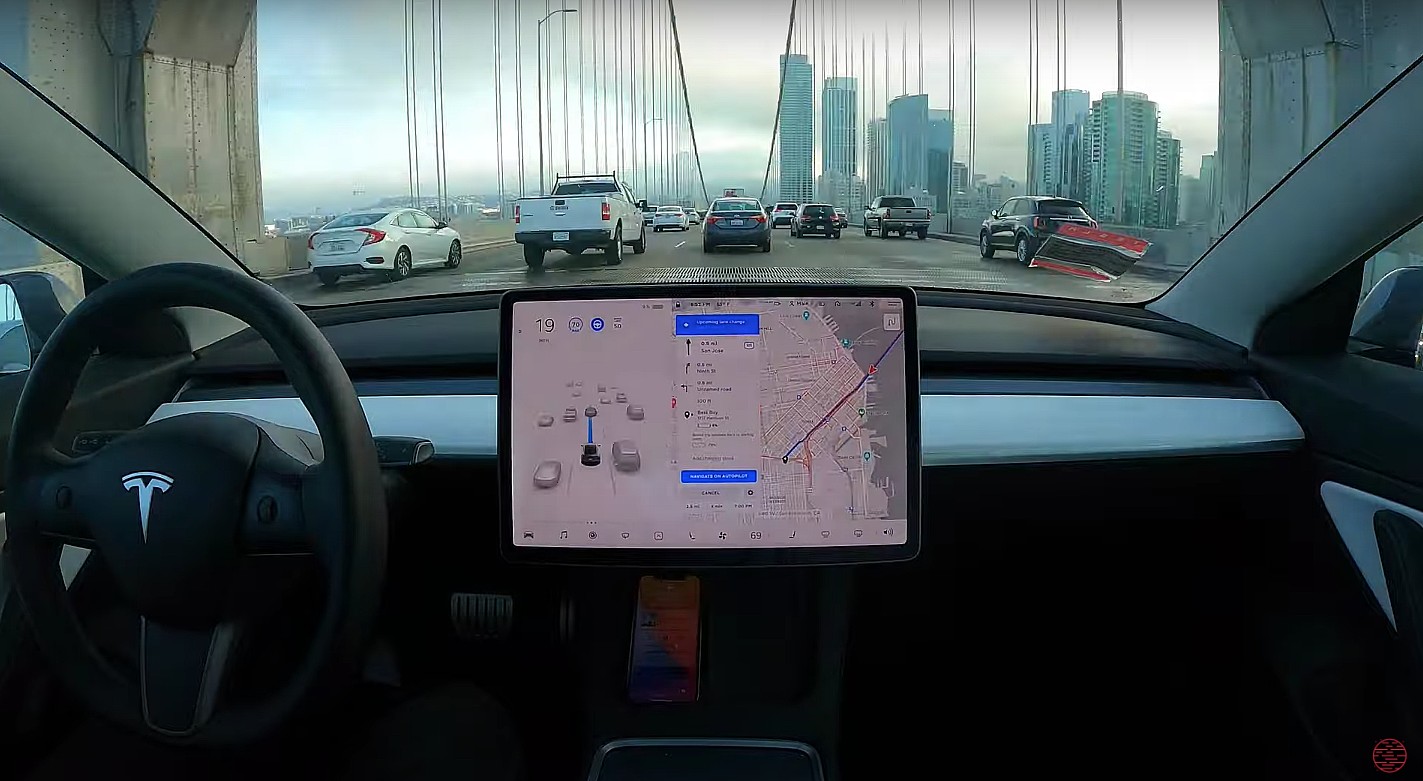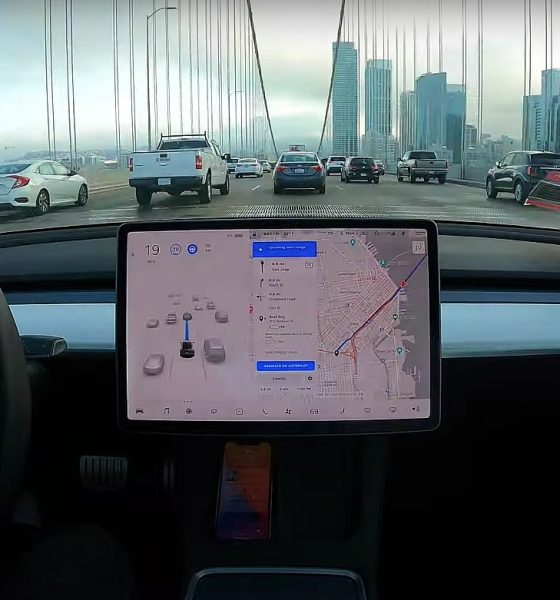

News
NHTSA’s incoming senior safety adviser has a serious anti-Tesla Autopilot and FSD bias
The National Highway Traffic Safety Administration (NHTSA) has recently confirmed that Duke University professor Missy Cummings is poised to be named as its new senior safety adviser. While her credentials as a computer science professor and background as a person knowledgeable about autonomous driving technologies would likely be an essential resource for the NHTSA, Dr. Cummings has exhibited something quite peculiar in social media — She appears to have a serious bias against Tesla, particularly surrounding the company’s Autopilot and Full Self Driving programs.
Over the years, Dr. Cummings, through her personal Twitter account, frequently posted overtly negative statements about Tesla, its vehicles, and its CEO Elon Musk. A number of Tesla owners and supporters who claimed to have not interacted with Dr. Cummings online also observed that they seem to have been preemptively blocked by the incoming NHTSA safety official.
Everybody has a personal bias about something they are passionate about. As such, it is understandable for the Duke University professor to adopt a skeptical stance on Tesla and its Autopilot and FSD programs. There is such a thing as a healthy dose of skepticism, after all. However, or at least based on the incoming NHTSA senior safety official’s Twitter feed, Dr. Cummings appears to have crossed the line from objective to subjective when it comes to Tesla and its technologies. The same goes for her stance regarding CEO Elon Musk. In March 2020, for example, Dr. Cummings seemingly joked about needing someone to stop her from punching Elon Musk in the face.
Punching jokes aside, the Duke University professor also stands as a present member of Veoneer, a Swedish LIDAR company. Publicly available SEC disclosures indicate that Dr. Cummings has received restricted stock units in Veoneer worth about $400,000 a year at present market prices. Considering that Tesla is a company directly competing with Veoneer in the way that it is developing autonomous driving systems with only a vision-based system, there seems to be a conflict of interest at play.
It should be noted that Dr. Cummings’ seat at Veoneer was not disclosed when she published a paper (which was later updated to remove inaccurate details about a fatal Tesla crash) criticizing systems such as Autopilot for their possible dangers. And so far, the incoming NHTSA senior safety adviser has not shared if she would be leaving her post at the Swedish LIDAR company, especially since she would soon be advising a US safety agency on driver-assist systems that adopt both LIDAR and non-LIDAR solutions.
Interestingly enough, Dr. Cummings’ criticism of Tesla and its Autopilot and FSD programs seems to stem from the fact that the company’s vehicles lack of equipment such as the LIDAR sensors provided by Veoneer. In an appearance at The Robot Brains Podcast earlier this year, the Duke University professor remarked that she is “basically an albatross around Elon’s and Tesla’s neck” and that “Where (she’s) going after is his (Elon Musk’s) desire to drop radar off of his cars and now go to vision-only.”
Dr. Cummings further noted that “There’s no vision research out there which doesn’t think that’s crazy and is gonna kill someone.” In a 2019 tweet, the incoming NHTSA safety official also noted that the NHTSA should require Tesla to disable Autopilot, since it “easily causes mode confusion.” This was a similar take from her post in 2018 when she noted that Elon Musk’s Tesla is the only “killer robot” present today.
Tesla CEO Elon Musk has noted on Twitter that the Biden administration’s appointment of Dr. Cummings as a senior safety official for the NHTSA is quite “odd,” and in a later post, Musk also observed that “Objectively, her track record is extremely biased against Tesla.” In response to Musk’s post, the incoming senior safety official for the NHTSA noted that she was “happy to sit down and talk with you (Musk) anytime.” Hopefully, such a discussion could really happen with as little bias from both sides as possible, and with absolutely zero punches being thrown at the Tesla CEO.
The NHTSA’s appears to have its eye on Tesla recently. Earlier this month alone, and as the agency’s probe on several Autopilot crashes on stationary emergency vehicles continued, the NHTSA asked Tesla to explain why it rolled out a safety improvement to Autopilot through an over-the-air software update without issuing a recall.
This was quite an interesting question from the NHTSA, seeing as the Autopilot update was done as proactive measure that would allow Teslas to operate in a safer manner on the road, not as a response to a defect. This was despite Tesla accounting for only nine crash injuries with first responder vehicles in the past 12 months, a small fraction of the 8,000 injuries that were reported by the Government Accountability Office (GAO) involving a stationary emergency vehicle in the United States in a year.
Don’t hesitate to contact us with news tips. Just send a message to tips@teslarati.com to give us a heads up.

Elon Musk
Elon Musk and Tesla AI Director share insights after empty driver seat Robotaxi rides
The executives’ unoccupied tests hint at the rapid progress of Tesla’s unsupervised Robotaxi efforts.

Tesla CEO Elon Musk and AI Director Ashok Elluswamy celebrated Christmas Eve by sharing personal experiences with Robotaxi vehicles that had no safety monitor or occupant in the driver’s seat. Musk described the system’s “perfect driving” around Austin, while Elluswamy posted video from the back seat, calling it “an amazing experience.”
The executives’ unoccupied tests hint at the rapid progress of Tesla’s unsupervised Robotaxi efforts.
Elon and Ashok’s firsthand Robotaxi insights
Prior to Musk and the Tesla AI Director’s posts, sightings of unmanned Teslas navigating public roads were widely shared on social media. One such vehicle was spotted in Austin, Texas, which Elon Musk acknowleged by stating that “Testing is underway with no occupants in the car.”
Based on his Christmas Eve post, Musk seemed to have tested an unmanned Tesla himself. “A Tesla with no safety monitor in the car and me sitting in the passenger seat took me all around Austin on Sunday with perfect driving,” Musk wrote in his post.
Elluswamy responded with a 2-minute video showing himself in the rear of an unmanned Tesla. The video featured the vehicle’s empty front seats, as well as its smooth handling through real-world traffic. He captioned his video with the words, “It’s an amazing experience!”
Towards Unsupervised operations
During an xAI Hackathon earlier this month, Elon Musk mentioned that Tesla owed be removing Safety Monitors from its Robotaxis in Austin in just three weeks. “Unsupervised is pretty much solved at this point. So there will be Tesla Robotaxis operating in Austin with no one in them. Not even anyone in the passenger seat in about three weeks,” he said. Musk echoed similar estimates at the 2025 Annual Shareholder Meeting and the Q3 2025 earnings call.
Considering the insights that were posted Musk and Elluswamy, it does appear that Tesla is working hard towards operating its Robotaxis with no safety monitors. This is quite impressive considering that the service was launched just earlier this year.
Elon Musk
Starlink passes 9 million active customers just weeks after hitting 8 million
The milestone highlights the accelerating growth of Starlink, which has now been adding over 20,000 new users per day.

SpaceX’s Starlink satellite internet service has continued its rapid global expansion, surpassing 9 million active customers just weeks after crossing the 8 million mark.
The milestone highlights the accelerating growth of Starlink, which has now been adding over 20,000 new users per day.
9 million customers
In a post on X, SpaceX stated that Starlink now serves over 9 million active users across 155 countries, territories, and markets. The company reached 8 million customers in early November, meaning it added roughly 1 million subscribers in under seven weeks, or about 21,275 new users on average per day.
“Starlink is connecting more than 9M active customers with high-speed internet across 155 countries, territories, and many other markets,” Starlink wrote in a post on its official X account. SpaceX President Gwynne Shotwell also celebrated the milestone on X. “A huge thank you to all of our customers and congrats to the Starlink team for such an incredible product,” she wrote.
That growth rate reflects both rising demand for broadband in underserved regions and Starlink’s expanding satellite constellation, which now includes more than 9,000 low-Earth-orbit satellites designed to deliver high-speed, low-latency internet worldwide.
Starlink’s momentum
Starlink’s momentum has been building up. SpaceX reported 4.6 million Starlink customers in December 2024, followed by 7 million by August 2025, and 8 million customers in November. Independent data also suggests Starlink usage is rising sharply, with Cloudflare reporting that global web traffic from Starlink users more than doubled in 2025, as noted in an Insider report.
Starlink’s momentum is increasingly tied to SpaceX’s broader financial outlook. Elon Musk has said the satellite network is “by far” the company’s largest revenue driver, and reports suggest SpaceX may be positioning itself for an initial public offering as soon as next year, with valuations estimated as high as $1.5 trillion. Musk has also suggested in the past that Starlink could have its own IPO in the future.
News
NVIDIA Director of Robotics: Tesla FSD v14 is the first AI to pass the “Physical Turing Test”
After testing FSD v14, Fan stated that his experience with FSD felt magical at first, but it soon started to feel like a routine.

NVIDIA Director of Robotics Jim Fan has praised Tesla’s Full Self-Driving (Supervised) v14 as the first AI to pass what he described as a “Physical Turing Test.”
After testing FSD v14, Fan stated that his experience with FSD felt magical at first, but it soon started to feel like a routine. And just like smartphones today, removing it now would “actively hurt.”
Jim Fan’s hands-on FSD v14 impressions
Fan, a leading researcher in embodied AI who is currently solving Physical AI at NVIDIA and spearheading the company’s Project GR00T initiative, noted that he actually was late to the Tesla game. He was, however, one of the first to try out FSD v14.
“I was very late to own a Tesla but among the earliest to try out FSD v14. It’s perhaps the first time I experience an AI that passes the Physical Turing Test: after a long day at work, you press a button, lay back, and couldn’t tell if a neural net or a human drove you home,” Fan wrote in a post on X.
Fan added: “Despite knowing exactly how robot learning works, I still find it magical watching the steering wheel turn by itself. First it feels surreal, next it becomes routine. Then, like the smartphone, taking it away actively hurts. This is how humanity gets rewired and glued to god-like technologies.”
The Physical Turing Test
The original Turing Test was conceived by Alan Turing in 1950, and it was aimed at determining if a machine could exhibit behavior that is equivalent to or indistinguishable from a human. By focusing on text-based conversations, the original Turing Test set a high bar for natural language processing and machine learning.
This test has been passed by today’s large language models. However, the capability to converse in a humanlike manner is a completely different challenge from performing real-world problem-solving or physical interactions. Thus, Fan introduced the Physical Turing Test, which challenges AI systems to demonstrate intelligence through physical actions.
Based on Fan’s comments, Tesla has demonstrated these intelligent physical actions with FSD v14. Elon Musk agreed with the NVIDIA executive, stating in a post on X that with FSD v14, “you can sense the sentience maturing.” Musk also praised Tesla AI, calling it the best “real-world AI” today.








